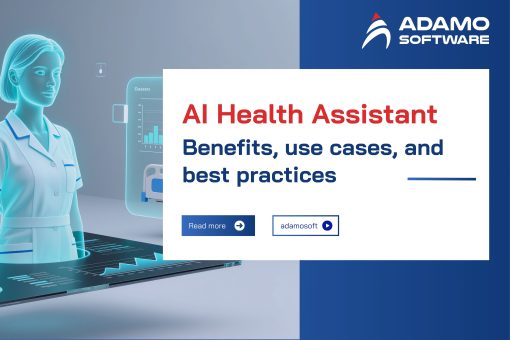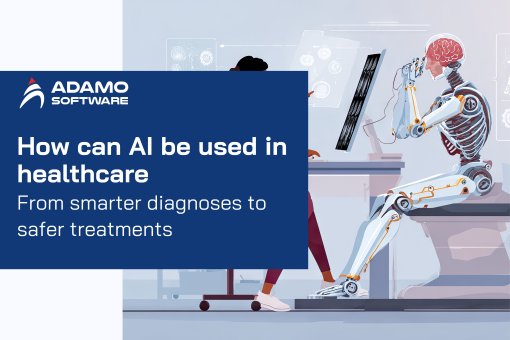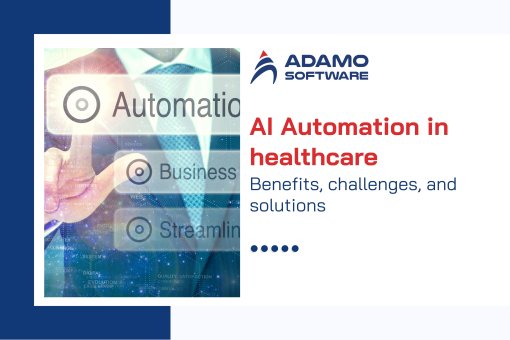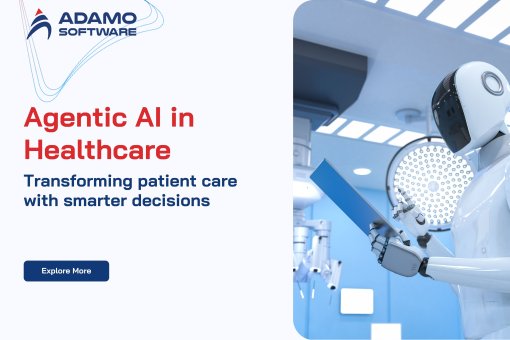Guide to EMR Integration: Key Challenges of EMR Implementation & How to overcome

As EMRs are an integral component of contemporary healthcare, proper EMR integration is necessary to overcome their limitations and maximize their utility.
According to HealthIT.gov statistics, approximately 80% of U.S. office-based practices and 95% of U.S. hospitals have implemented a certified EMR solution. 70% of providers, according to Net Health, are dissatisfied with their current solutions.
You may wish to find an EMR that meets all of your practice’s requirements. But it is highly unlikely that such a solution exists. Regardless of the vendor or solution you seek, it is highly likely that it lacks one or more features that are essential to your clinical workflow. In this article, we will examine EMR integrations and the reasons why they are crucial for effective implementation.
I. What is EMR Integration?
Electronic Medical Record (EMR Integration) is the process of connecting various healthcare information technology systems to share patient data. EMR Integration aims to enhance the efficacy and quality of care by enabling providers to access patient records from any location. Although EMR Integration can be challenging, the benefits justify the effort.
EMR Integration establishes a platform for healthcare professionals and patients to effectively communicate, reduces errors, and enables doctors to track vital information. Most medical practices utilize these platforms to centralize all patient data in one location.
Integrating an EMR system into your medical practice can be advantageous, as it will enable patients to make appointments and check their records, communicate with you from anywhere in the world, and ask the doctor questions – all while achieving greater efficiency and improved patient care! This can significantly affect your medical practice.
II. Importance of EMR: Why do we need to invest in EMR?
In the healthcare industry, the term EMR Integration refers to the digital storage and protection of a patient’s health information. These patient-centered documents are accessible at any time to authorized healthcare professionals, thereby streamlining clinical workflow. Providing real-time access to the patient’s diagnosis details, treatment plans, aftercare, allergies to medications, lab results, and more, EMR in healthcare has become a vital component in assembling the patient’s medical history.
This EMR Integration provides access to essential digital health decision-making tools. The efficacy of EMRs automates and streamlines the process for providers and makes the healthcare workflow more effective in achieving care-driven objectives.
III. Key EMR implementation challenges
1. Technical ability of EMR integration
According to the Morsani College of Medicine of USF Health, the ability of a computer to retrieve and transmit data throughout healthcare is dependent on its age and other factors, such as the location of the practice. Connecting a system located in a rural area to the system and the internet can be more difficult than connecting a system located in an urban area.
2. Cost of use
Implementation and use of advances in health information technology, such as EMR Integration, can be costly. Especially for lesser practices, finding the funds to invest in training, support, and physical infrastructure can be a common obstacle. Before deciding to implement EMR integration, it is crucial to plan the necessary funding.
3. Staff resistance
In addition, there are health practitioners who are skeptical about the efficacy of electronic health records and privacy protocols. They may be reluctant to give up the documentation process due to the absence of digital integration. In some instances, the staff is unaware of the most recent technological developments and the extensive advantages of EMR integration.
4. Lack of usability
If the EMR integration is insufficient to accommodate the current workflow, providers find it challenging to acclimate to it. The rule that “one size fits all” does not apply to the EMR system, as the workflow of a therapist differs from that of a cardiologist and vice versa. Design faults and inadequate training reduce the user-friendliness of the EMR integration. Data breaches in the healthcare industry can have fatal effects on patient health outcomes.
5. Data Privacy
According to USF Health, some healthcare providers and patients may be concerned about medical privacy when using EMR integration. These worries may include data loss resulting from natural disasters or cybercrime. Before implementing EMR integration, clarify the safeguards and protocols incorporated into your new system to effectively address these concerns.
6. Interoperability
Interoperability is the process of making integrated health data accessible so that providers and hospitals can exchange information more effectively. Interoperability enables providers and healthcare practitioners to have consolidated and structured access to patient data to provide better treatment and care delivery.
Interoperability in EMR integration is required for a thorough understanding of a patient’s health record, yet it remains one of the greatest obstacles in electronic health records for accurate data transmission. This lack of interoperability can hinder care coordination and prevent the identification of the cause of medical assistance.
7. Workflows
One of the primary objectives of implementing EMR integration is to streamline the workflow of your staff. However, if not properly customized, EMR integration can disrupt the practice’s existing workflow. To avoid this issue, ensure that the EMR vendor you select provides a comprehensive demonstration of how the implementation will meet the specific requirements of your pediatric practice.
8. Training
During EMR integration, practices should educate their staff on the new workflow procedures. Sadly, some practices may not be able to afford the additional time, effort, and resources required. Before committing to EMR integration, determine exactly how much training will be required and only proceed if your practice is prepared to complete it. Training is crucial to the success of an EMR integration.
Staff training is not an optional aspect of EHR integration; it is a necessary investment in the success and longevity of your practice. By prioritizing training, you enable your team to maximize the EMR system’s capabilities, resulting in improved patient care, increased efficiency, and compliance with healthcare regulations.
9. Limitation of technical resources
This is one of the EMR integration obstacles that small clinical facilities and private health practitioners frequently face. Rarely do they possess an internal team with technical knowledge and provider supervision. Moreover, they may lack the necessary hardware to support the EMR integration. A common reason for small and medium-sized healthcare providers to delay the EMR integration process is the high cost of assembling an in-house team with qualified personnel and the necessary expertise, as well as purchasing infrastructure.
10. Data migration
Exporting paper-based documents into digital records is a logistical nightmare for the staff. The staff may find data entry to be a laborious and time-consuming task due to the large volume of patient medical histories that will require entry. This is one of the greatest EMR integration challenges for institutions, and the effort is doubled if the previous system lacks a suitable format.
11. Lack of communication
Effective communication between the healthcare provider, IT vendor, and patients is crucial for the development of an EMR integration that achieves the desired outcomes. Assuring that all parties’ expectations are met is not a one-time activity, but rather an ongoing procedure. The provider’s concerns and suggestions should be addressed appropriately, and the vendor should be able to develop effective tools that meet the provider’s specifications.
Without appropriate communication, the objectives cannot be met, resulting in a massive survey of EMR data collection system integration challenges.
12. Lack of proper planning
EMR integration brings about a cultural shift within the organization, as opposed to merely a technological enhancement. Therefore, the administration aspects of EMR integration represent a formidable obstacle. It needs to be strategically planned and commitment is expected from all stakeholders. Without a structured plan for EMR integration, data intrusions and cybersecurity threats to patient data may occur. Without extensive planning, the successful implementation and sustainability of EMR integration can seem like a pipe fantasy.
IV. How to overcome EMR integration solutions
1. Find the proper location
Ensure that the location of your practice will facilitate the implementation and utilization of EMR integration stress-free for you. Whenever feasible, upgrade your plan or switch to a different internet service provider with better connectivity.
2. Alter implementation cost in advance
You must alter your annual budget in advance for EMR integration to be successful. Even though the process is expensive, it will save you a significant amount of money in the long run because physicians will be more efficient and patients will be happier.
3. Ensure strong leadership
To align the team with the EMR integration process of the organization, leaders should proactively alter the management. Create a sub-committee of leaders who have experience in implementing new IT systems in various fields to guide the implementation team. Enhancing the implementation of EMR technologies and systems through effective leadership.
4. Ask for system compatibility advice
Contact your software development partner for advice regarding the compatibility of your systems with the EMR you intend to develop in the future. They can provide you with a risk-minimizing solution.
5. Focus on privacy concerns
When integrating your EMR, give special attention to the applied security measures. Choose cloud-based HIPAA-compliant platforms that can safeguard all information and guarantee the utmost level of security.
6. Interoperable EMR integration
There may be obstacles to EMR interoperability in the healthcare market, but interoperable EMR integration can save time, money, and effort. The benefits of implementing an EMR integration reduces the workload of staff members and increases their productivity so that they can continue to provide superior healthcare services. The digitization of data facilitates the elimination of redundancies and accelerates the processing of patient information to expedite the transmission of data to providers.
7. Adjust the workflow
It is mandatory to consider EHR integration when designing workflows. Chances are high that you will have to adjust them a lot as well as update records accordingly to make everything suit the system you are planning to introduce. Some clinics will have to make modest adjustments, while others may have to start from scratch.
8. Provide additional training
Request that your software development company devote time and resources to assisting your hospital with the transition to a new system and providing additional training so that future EMR users have no concerns. Optionally, compose a guide that will serve as a resource for colleagues.
9. Work with experts
For successful EMR integration, obtain assistance from specialists who have in-depth knowledge of both the hospital’s workflow and the interoperability protocols of EMR integration. Utilize the opportunities to learn from executives who have successfully implemented EMR integration in a healthcare facility. This aids in anticipating potential roadblocks and swiftly resolving them.
10. Aiding in clinical research
It is a well-established fact that healthcare and patient information data is a crucial component of clinical research. The seamless implementation of EMR integration significantly enhances data interoperability throughout the care continuum. Clinical researchers will have simple access to the necessary data, and interoperability systems will allow providers to exchange these data with scientists and researchers to expedite their research.
11. Treat consultants as a partner
EMR integration is a collaborative process that requires commitment from all the team members including providers, IT vendors, consultants, staff, physicians, etc. After implementing electronic health records, communicate the process’s larger vision and make its attainment a shared objective for all parties involved. This contributes to the timely, cost-effective, and user-friendly completion of the implementation.
12. Have a strategic plan
Assign duties and responsibilities to team members, identify physician champions, and establish an environment of mutual support and dependence. Ensure that the team’s contingency measures are also in place. During the implementation phase, the productivity of the workforce may decline, the workflow may become chaotic, and patients may become irritated. Preparation is essential for a successful EMR integration, which is an important point to consider.
V. Essential EMR integration for healthcare practices
1. Telehealth
As a result of the COVID-19 pandemic, remote patient care is expanding, and providers must provide satisfactory virtual care without interrupting their clinical workflow. The goal is to incorporate telehealth visits into their current workflow; integrating telehealth and EMR integration may be the answer.
A telehealth EMR integration provides practitioners with a bidirectional, end-to-end interface for exchanging patient data between systems. Providers can initiate video sessions directly from their existing EMR integration while quickly accessing and entering patient data.
2. Laboratory Information System
Manually generating and receiving laboratory orders is a time-consuming and error-prone process. It disrupts the vital flow of clinical data, frequently leading to inconsistencies and incomplete records. An EMR integration with an LIS streamlines the entire order-to-receipt procedure.
3. Clinical trial management system (CTMS)
CTMS is used by biotechnology and pharmaceutical companies to streamline operational data management in clinical trials and research. Even though EMR and CTMS are separate systems designed to serve different purposes, they genuinely complement one another in terms of patient safety.
The details of a patient’s participation in a clinical trial, including whether they are presently enrolled, must be shared with physicians. Likewise, clinical trial physicians must be familiar with the patient’s medical history and treatment to maximize patient safety.
4. Medical Device Integration (MDI)
At the point of care, a large number of biomedical devices are utilized by numerous practices. Monitors, smart beds, anesthesia carts, finger cuffs, and ventilators are utilized in operating rooms and intensive care units to monitor vital signs such as blood pressure, pulse rate, and oxygen saturation. These devices generate vast quantities of data that are utilized in clinical decision-making and regulatory requirements.
By integrating these medical devices with the EMR system, an MDI automates data transcription. A vendor-neutral MDI can connect your biomedical devices to multiple EMR integrations, bringing modern healthcare practices closer to complete interoperability.
5. Medical Billing
Even though many EMR integration includes billing capabilities, EMR, and medical billing software are fundamentally distinct. While EMR focuses on patient care, medical invoicing is solely concerned with revenue cycle management. Integration with specialized invoicing software could increase your practice’s reimbursement and profitability.
Depending on the requirements of your practice, choose between integrated packages from a single vendor or vendor-agnostic systems. Vendor-agnostic billing systems might enable you to provide a more personalized billing solution for your practice.
VI. Strategies for EMR integration from IT Experts
1. Effective communication
We recommend consulting your clinicians and anyone else in your organization who is likely to use the integrated solutions at each stage of implementation. How will their use of the EMR integration benefit them? What are their expectations? Understanding their workflow helps decision-makers plan their integration strategy more effectively and facilitates proper coordination between the various stakeholders – clinicians, staff, IT, and vendors.
Effective and consistent communication throughout your organization also ensures that everyone is on the same page regarding status, issues, and educational materials. Shift changes, meetings, and ticket processing must be optimized to ensure prompt responses to queries. Effective scheduling with common directives and optimized schedules can prevent staff burnout during the implementation process and ensure that sufficient super users are available 24/7.
A decisive orientation procedure ensures that your entire practice is aware of the scope, objectives, and strategy of the integration. Transparency is required between integration resources and organizational personnel.
2. Identify Implementation Goals
Integration projects, particularly larger ones, can rapidly spiral out of control in the absence of a well-planned integration strategy. Consequently, defining a suitable implementation strategy, including the scope of integration, at the onset of the project is crucial for a successful EMR integration. The scope also includes a fully integrated workflow, organizational requirements, data migration needs, ownership cost, sites, and involved parties.
After designating a team and conducting a comprehensive evaluation and consultation with your clinicians, conduct a rigorous evaluation to determine: Why does your practice need to implement an EMR integration? What does it contribute to the table? Are you prepared to implement your practice? In addition to identifying voids in your practice’s operations, the analysis should help you determine the parameters for establishing project objectives. To ensure a smooth integration process, designate roles appropriately, including an executive manager and integration, network, and security leads.
3. Early Vendor Management
Once you have a solid understanding of the scope of your project and the objectives of your company’s EMR integration, you should engage and coordinate with your vendor as early as possible. Initiating a project with formal contracts and statements of work that outline the scope of the EMR integration is essential. Request information from your vendor regarding implementation support, learning curves, data backups, and potential obstacles. In addition, you should align vendor, resource, and organizational timelines.
Early completion of the scope definition, role assignment, and vendor coordination paves the way for a seamless integration process. It also helps you begin with time-consuming legal tasks such as contracts and statements of work (SOWs).
4. Meticulous Testing Plan
Since test plans are typically defined differently by various vendors, all stakeholders should have a shared understanding of each test phase, timeline, and level of detail. Various terms are associated with the various phases of testing:
- Connectivity Test: Following the extraction of sample messages from the clinical solutions, a secure VPN tunnel is established and messages are sent through the tunnel to test connectivity. Analysts examine the results and conduct initial troubleshooting.
- Functional Test: Each message category is extensively reviewed to ensure that the EMR integration interface and vendor models are correctly mapped.
- Integrated Tests: These are conducted in multiple phases with varying scenarios between health systems and APIs to identify and resolve problems.
- Other: other testing phases include unit tests, user, acceptance tests, stress tests, volume tests, field-specific tests, mapped record tests, and small and large-scale tests.
Proper definitions and descriptions are necessary for all parties to have a shared comprehension of the project’s phases. Determine which resources are being utilized during testing, when the tests are conducted, and how much time is necessary.
5. Define and review clinical and functional requirements
Without a clear understanding of your clinical and business operations, resources frequently deliver solutions that are insufficient for various stakeholders. Incorporating functional, clinical, business, and technical workflows into the integration, therefore, necessitates a shared understanding and the participation of key stakeholders. Clinicians, technical teams, and other users must evaluate and authorize the functionality.
6. Configuring systems with organization security framework
When adding a new system or device to your organization’s workflow, security must be a top priority to prevent a data breach. User access controls and authentication methods are effective means of maintaining data control and preventing costly breaches. Communicate with your vendor to ensure that the access controls and authentication methods are transferred to the new system and that the encryption models comply with your current security framework.
7. Activation Plan
When it is time to go live, it would be a shared responsibility for internal and external resources to perform data acquisition, data cleansing, data standardization, and quality assurance. A step-by-step activation plan should be in place to reduce the role of external resources and ensure that your staff can operate the integrated systems effectively. Create a transition plan, check documents, and early evaluations.
8. Post-activation support protocol
The weeks following a deployment can be quite challenging. Even with careful planning, things may not go as expected. Miscommunications, testing, and design defects may accumulate and manifest only after going live. You should have a concise plan for addressing accidental problems and errors.
9. Feedback and optimization
For the first two to three months, track and monitor the EMR integration extensively via analytics reporting. Systematically collecting and analyzing frequent feedback from all end-users is required.
Utilize this feedback during the optimization phase to identify gaps as early as feasible and employ resources to redesign and incorporate functionality based on your specific business requirements.
VII. Adamo Software – Help You Overcome EMR Integration Challenges By Our Experiences
As a premier software development company in Vietnam, Adamo Software has lots of experience in creating web app and mobile apps in the healthcare industry. With our skillful developers, Adamo creates a lucrative EMR integration for your business.
We help healthcare service providers to transform their business ideas and explore new business opportunities. If you are looking for healthcare software development, contact us for more details.











